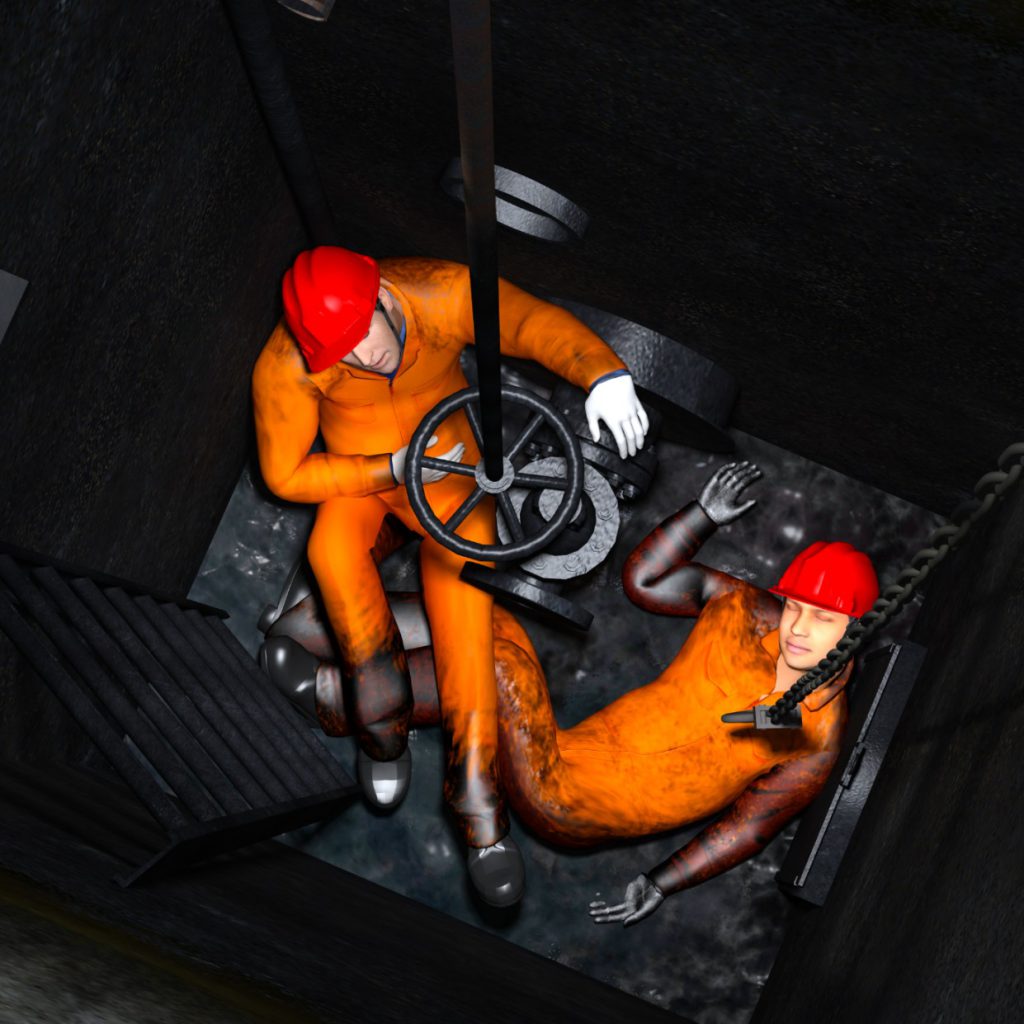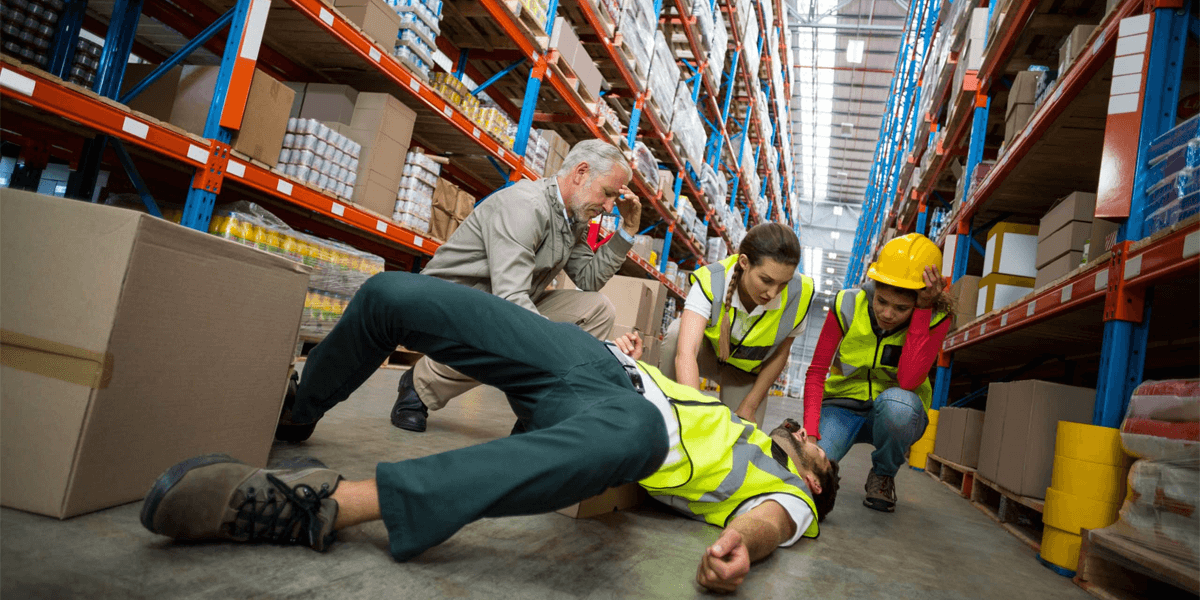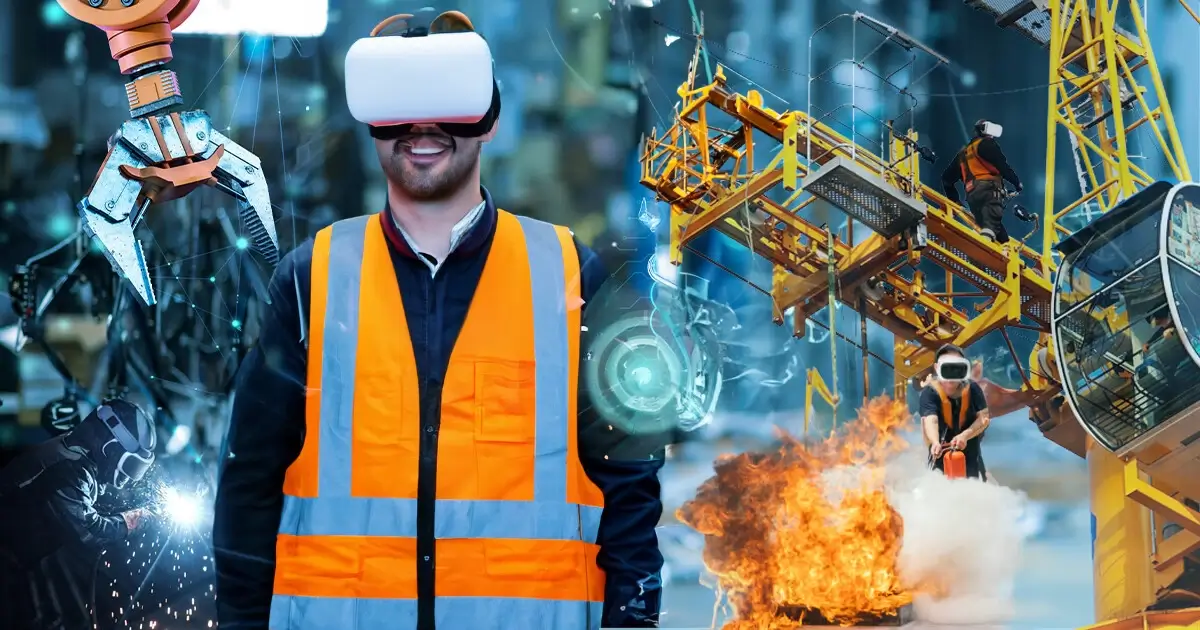
Table of Contents
Introduction
It’s imperative to remember that safety in confined spaces is not just about compliance with regulations but about protecting lives. Regular reviews and updates of safety protocols, coupled with continuous education, will help ensure that every worker returns home safely.
Did you overlook a critical hazard when preparing for restricted-space work? Which one do you believe gets forgotten the most? And why are confined spaces dangerous?
If you listen to a lot of employees, managers, and health and safety advisers, you may believe that the only things that could kill people in a confined place are explosions and dangerous gases.
If you ask someone who has studied the Confined Space Regulations 1997, they will likely correctly point out that drowning and severe increases in body temperature are among the consequences.
So, what is typically overlooked?
Falling and falling things.
If you’re falling headfirst down a pitch-black hole in the ground, wearing steel toe cap boots and a hi-viz vest won’t do much good.
How often have you seen someone open a manhole cover before standing next to it with their hands on their knees and bending over to see what’s underneath?
They might even be monitoring the gas, which is necessary, yet they could fall in! In fact, it’s not uncommon to see a health and safety manager or trainer lecturing staff members while standing next to an open cover or hatch with a 4 or 5-meter drop below it about the danger confined space presents, the weather and the necessity for the proper PPE. Not a harness or barrier to be found. The group may then be permitted to peer inside the cramped area, craning their necks to peer down into the shadows.
Any number of distinct cramped areas, including a silo, vessel, or valve chamber. This is a typical circumstance for many businesses that operate in small areas.
There are seven risks that make enclosed spaces dangerous.
If working in limited spaces is unavoidable, you must use utmost caution. The results of getting into trouble in a small area can be fatal. Training via practical and virtual learning, such as safety animation and eLearning, and confined space risk assessment shall enhance their SMEs in confined spaces.
For now, here are the top 7 dangers in restricted spaces.
This is a typical situation for many businesses that operate in confined spaces.
Enhance your workforce’s safety skills with animated safety videos that effectively demonstrate best practices for confined space safety.
Confined Space Hazards: Hazards of Working in Confined Spaces
If working in limited spaces is unavoidable, you must use utmost caution. The risks associated with confined space hazards can be fatal. Training via practical and virtual learning, such as safety animation and eLearning, along with a thorough confined space risk assessment, enhances safety in confined spaces.
For now, here are the top 7 dangers in confined spaces.
For industry-specific safety training, consider technical subject training videos that cover confined space protocols in detail.

Low Oxygen Levels: A Critical Confined Space Hazard
Organic reactions can deplete oxygen levels in a confined space. Certain soils and oxygen, or groundwater and chalk or limestone, can react to produce carbon dioxide, which replaces oxygen in the atmosphere. The formation of rust inside tanks might also result in an oxygen shortage.
After accessing a cargo hold at Goole Docks in 2014, three crew members perished.
According to the research, the compartment’s oxygen levels were between 5% and 6% at the compartment deck, likely because of the lumber load.
Vapors, Fumes, and Gases: Hazards from Confined Space Environments
Due to poor ventilation, confined space hazards include the build-up of toxic vapors and gases.
For example, deadly gas leaks from polluted land or burst gas pipes can enter the small space. Alternatively, they could be produced by tasks like welding, adhesives, or paint fumes.
Mitigate gas-related risks by conducting thorough safety inductions with animated videos designed for contractors and employees.
These gases and vapors can potentially produce a hazardous atmosphere in tight spaces without extraction or ventilation.
Flooding: Potential Risks of Confined Space Flooding
Liquids can rapidly flood a confined space, particularly in drainage or sewer operations, potentially trapping workers inside.
And you ought to be concerned about more than simply liquids. Solids can also overflow small places, such as collapsed trenches, putting anyone inside the trench at risk of becoming trapped or buried.
More than just liquids, even solids—like collapsed trenches—can engulf and trap workers, making confined space potential hazards extremely dangerous.
Dust
Dust can naturally accumulate in confined spaces or result from activities like drilling or grinding.
Excessive dust inhalation can cause lung diseases, while highly combustible dust poses a significant danger confined space.
To prevent workplace hazards, implement standard operating procedure (SOP) training that outlines safety measures in detail.
Dust accumulation can also raise the risk of a fire or explosion, particularly in areas with poor ventilation.
Explosions and Fires
Flammable dust, liquids, gases, and vapors inside a confined space increase the risk of fire and explosions. Any hot work or items that can spark when used in a restricted location also increase the risk.
Recall how the first item on our list was an oxygen shortage. Of course, too much oxygen is hazardous as well. Oxygen levels that are too high raise the possibility of fire and explosion.
Thermostat
A harmful rise in body temperature might be caused by difficult building work, heated conditions, or naturally occurring heat. This can quickly develop into a problem in small locations that are challenging to escape, even under ideal circumstances.
Due to the constrained nature of a limited space, heat can build quickly.
Heatstroke, exhaustion, and collapse may result from this.
Access Limitations: Challenges in Confined Space Entry and Exit
In addition to being dangerous, confined locations can be challenging to enter. This makes it difficult to leave and makes any emergency rescue challenging.
Ensure safe operations with animated SOP videos that guide workers through proper safety protocols.
Once you are in a small area, it could be difficult or impossible to escape. Therefore, it’s crucial to understand that work can be done safely before you enter and that emergency plans are in place.
Remember, if working in confined spaces is unavoidable, you must conduct a risk assessment to determine the dangers and what safety measures are required to control the risk.
One step away from not going home from confined space hazards
While explosives and hazardous gases continue to be significant threats in many tight areas, another concern frequently goes unrecognized. It is a risk that, overall, is responsible for the most workplace fatalities.
“…a thump and moans of anguish, then a minute of silence.”
Imagine the setting for a typical hazard in a confined space.
A group of workers is using a manhole around 10 feet deep to access a tight place. In the center of a field, there is a manhole. The area has been gas-tested and vented. Over the manhole, a tripod has been placed. This is a solid beginning. As they descend a ladder or step irons, the tripod will enable them to be secured to a fall arrest device.
Two of the employees are positioned about two feet from the manhole, adjacent to the tripod, and are both wearing harnesses. But nothing is attached to their harnesses! If you take one step back, there will be a brief silence, followed by a thump and agonizing groans. They’ll drop through the manhole quite effortlessly.
They may enter the manhole safely thanks to the harnesses they are donning. But because they are so close to the entrance, they are vulnerable and at risk of falling at any time.
The examples of confined space hazards above are not good at all.
For that matter, the law and regulations specify.
“When performing work at a height, every employer must take reasonable precautions to prevent employees from falling an unsafe distance.”
In the confined space access scenario we’ve considered so far, there is a chance that someone could fall and sustain a personal injury.
Yet, in many cases, nothing has been done to mitigate the danger that confined space presents. What appropriate and sufficient steps might there be to stop this, then?
Steps To Be Taken For Safe Working In Confined Spaces
Barriers
Barriers prevent falls into a confined space. They prevent workers at ground level from falling. Additionally, some of them contain a gate so that workers can enter through the gate after attaching to a tripod-mounted fall arrest device while outside the barrier. Collective protection, such as barriers, is preferred when comparing fall protection strategies since they protect everyone beyond the confined zone.
Additionally, little training is needed for barriers to work. Barriers have the drawback of potentially obstructing rescue operations. Some metal barrier systems have been attached to tripods or davit arms, resulting in a durable and portable integrated access solution.
Lanyards
Workers can be protected using personal protection devices like fall arrest lanyards or adjustable lanyards. They provide a versatile option that leaves the tripod accessible while shielding one person. Barriers are typically preferred because these systems can only protect one person at a time; nevertheless, in a rescue scenario, lanyards can provide more room for extracting a casualty in an emergency.
Lanyards should be utilized as a component of “work restraint” systems whenever practical. To avoid falling, the user cannot reach the fall hazard physically. This will continue to permit the tripod’s or other rescue equipment’s usual operation if properly configured.
Conclusion
Understanding what is confined space hazards is crucial for ensuring worker safety. Each of the seven hazards discussed—oxygen deficiency, toxic atmospheres, flammable gases, entrapment, engulfment, physical obstacles, and limited ventilation—poses unique risks that can lead to severe injuries or fatalities if not correctly managed.
Employers and workers alike must prioritize safety measures, including comprehensive training, rigorous hazard assessments, and the use of appropriate safety equipment. By fostering a culture of safety and vigilance, we can reduce the risks of confined space hazards.
Stay informed, stay prepared, and most importantly, stay safe.
Enhance your team’s safety awareness with animated safety videos that visually demonstrate key safety measures.



